Israel Comes to Canaan
Is the Biblical Account of the Israelite Conquest of Canaan Historically Reliable?

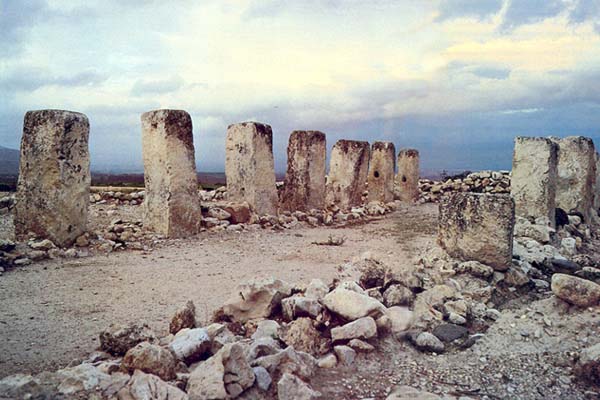
There are essentially two views of the Israelite occupation of Canaan. The first conforms in its main outlines to the Biblical view; that is, the Israelite occupation was initiated by several lightning military attacks on major Canaanite cities and was followed after some time by Israelite occupation of adjacent areas thus subdued. (The Bible also recognizes that certain Canaanite enclaves like Jerusalem held out much longer, even to David’s time.)
The other view is that the occupation was initiated by peaceful Israelite infiltration of largely unoccupied hill country. Then increasing Israelite pressure led to the collapse of the main Canaanite cities.
The first view is associated especially with the great American archaeologist, William Foxwell Albright, who pioneered in the use of archaeological materials to elucidate the Bible. The second view is associated with scholars of the so-called German school: Albrecht Alt and his follower Martin Noth, who based their views principally on a study of the literary traditions contained in the Bible, and, more recently, Manfred Weippert who attempts to conform archaeological evidence to this interpretation of the literary traditions.
Since I disagree with the Alt school, I shall let Professor Weippert summarize its views. In a recent book entitled The Settlement of the Israelite Tribes in Palestine, Weippert states:
“The tribal confederacy did not exist at the time when those who later became the Israelites entered Palestine. It is extremely doubtful whether in that period one can speak at all of ‘Israelite’ tribes in the later sense. According to Alt, one must suppose, rather, that it was a question of individual clans or confederacies of clans of nomads with small cattle who, during the winter rainy season and the spring, lived with their herds in the border territory between the desert and the cultivated land and who were forced, when the vegetation in that area ceased in summer, to penetrate further into the cultivated land and to come to an understanding with the owners of the land about summer pasturage in the harvested fields and in the woods.”1
Again quoting Weippert, according to Alt:
“The clans who entered the country in this way in the course of a regular change of pasture then gradually settled in the relatively thinly populated wooded areas of the uplands, areas which were not directly exposed to the reach either of the Canaanite city-states or of Egyptian sovereignty, and began to practice agriculture once they had turned these wooded areas into arable land. This peaceful process of transition on the part of nomads to a sedentary life was, according to Alt, the real process of settlement and it was, in the nature of things, a peaceful development since the interest of any landowner in the area would not be harmed. Only gradually, at a second stage, did the ‘Israelites’ expand also into the fruitful plains and valleys which had long been occupied by closely packed groups of Canaanite cities. In this way there occurred isolated military encounters in which the ‘Israelites’ were not always the victors … but in which they nevertheless succeeded from time to time in taking a fortified city, massacring or driving away its inhabitants and themselves taking over the cultivation of its arable land. Alt called this second stage of ‘Israelite’ settlement in Palestine ‘territorial expansion.’”2
Weippert’s analysis of the archaeological evidence led him to conclude that this evidence is “essentially silent.”3 According to Weippert, we must rely basically on Alt’s literary analysis because the archaeological evidence simply does not speak to the problem. “Where definite statements are possible,” Weippert tells us, “these support the settlement theories of Alt and Noth rather than those of Albright and his followers.”4
I find this conclusion that the archaeological evidence is “silent” rather astounding. I submit that the archaeological evidence Weippert calls “silent” is, in fact, resounding. I shall now try to explain why.
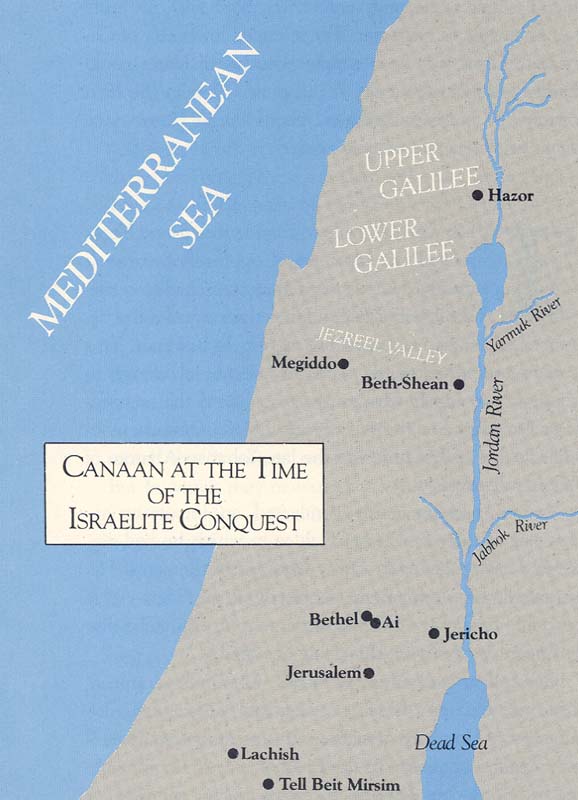
All archaeologists agree that at the end of the Late Bronze Age (the Late Bronze Age is generally dated from about 1,550 B.C. to 1,200 B.C.), the material culture we associate with this period abruptly stopped. Late Bronze agriculture was based on fortified city-states. At the end of the period, many of these cities were destroyed. The archaeological evidence shows conflagrations and distinctions which cannot be attributed to famine or earthquakes. Sometime later (that is, in a later archaeological stratum), a new and completely different culture developed, sometimes on the destroyed site and sometimes on a new site. This new culture (Iron Age culture) was initially rather poor architecturally, so poor it can hardly be called urban. This culture appears to reflect the first efforts at settlement by a semi-nomadic people. While this is the general pattern, certain destroyed sites were rebuilt immediately with fortifications and the attributes of a proper city.
Suppose we were excavating not in Israel, which is so intimately bound up with historical sources in the Bible, but in some terra incognita. Surely, in that context, no one would regard this evidence as “silent.” I submit that the archaeological evidence can be regarded as silent only if one has an a priori commitment to the Alt school which thoroughly rejects the historical value of the Biblical text.
Suppose the archaeological evidence were different. Suppose that no Late Bronze Age cities had been destroyed. Suppose that the destruction of these cities had occurred in the Iron Age (say about 1,050 B.C.). Suppose that only then was the older culture replaced by a semi-nomadic culture. If those were the facts, you may be sure the followers of the Alt school would not regard this evidence as “silent.” They would instead have pointed to the remarkable archaeological support for their view of the Israelite settlement.
The fact is, however, that excavation results from the last 50 years or so support in a most amazing way (except in some cases to be mentioned later) the basic historicity of the Biblical account.
The Biblical narrative in broad outline tells us that at a certain period nomadic Israelites attacked the city-state organization of the Holy Land, destroying many cities and setting them on fire. Then, slowly but surely, the Israelites replaced these cities with new, unfortified cities or settlements. At the same time, they attempted to occupy certain cities but were unsuccessful. The residents of those cities continued to live side by side with the new invaders. As already indicated, this description—leaving out the words “Canaanite” or “Israelite”—is exactly the picture which the archaeological finds present to us: a complete system of fortified cities collapsed and was replaced by a new culture whose material aspect can be defined as the first efforts of semi-nomads to settle down.
I do not wish to be misunderstood as arguing that the archaeological record is absolutely consistent with the Biblical record and that excavation results raise no problem whatever. What I am saying is that in its broad outline the archaeological record supports the narrative in Joshua and Judges, as Albright said.
I think it would be a mistake to argue either that the entire conquest account in Joshua and Judges is historically accurate in every detail or that it is historically worthless.
I believe that Albright’s approach is correct in its broad outline—although not necessarily in its details and, again with Albright, we must examine Biblical evidence open-mindedly and compare it with the archaeological evidence in each case, without prejudice or bias or any preconceived notion. Where we find agreement between the Biblical narrative and the archaeological evidence, there is no reason to doubt the historicity of that particular Biblical source. On the other hand, where the archaeological evidence bluntly contradicts the Biblical narrative—as it sometimes does—we should examine the possibility that that particular chapter in the Bible is either etiological,a a later interpolation, or an editor’s misunderstanding. Let us not be dogmatic. Let us not try to find a solution which will satisfy or reconcile all the sources in the Bible; yet at the same time let us not dismiss a priori the basic historiographic approach of the Bible—(which I believe is fully confirmed by archaeological excavations)—that there was a phase in the Late Bronze Age in which Israelite nomads, like nomads from other parts of the country, managed to attack the decadent Canaanite settlements; these nomads then slowly but surely moved into the next phase in Israel’s history, the sedentary settlement of the tribes in the country on the ruins of earlier Canaanite cities.
With this approach in mind, let us examine some of the archaeological evidence which, I think readers will agree, is far from “silent.”
Let me begin by considering Hazor, not simply because I excavated it, but because it has been regarded by both sides in the debate as a key site, especially in the north, and also because it illustrates the attempts made by followers of the Alt school to conform the archaeological evidence to preconceived notions.
Hazor is mentioned in the conquest narrative primarily in Joshua 11, which describes how Joshua defeated a Canaanite league headed by Jabin, king of Hazor. Joshua then captured Hazor, smote its king, and burned the city. The Biblical description is vivid:
“At this point Joshua turned his forces against Hazor, formerly the head of all these kingdoms. He captured the city and put its king to death with the sword. They killed every living thing in it and wiped them all out. They spared nothing that drew breath, and Hazor itself they destroyed by fire … The other cities whose ruined mounds are still standing were not burned by the Israelites. It was Hazor alone that Joshua burnt.”
Joshua 11:10–15
Our very extensive excavations at Hazor clearly demonstrated that a large Canaanite city was suddenly destroyed and set on fire in the 13th century B.C. (end of the Late Bronze Age), no later than about 1,230 B.C. On the thick debris of the mound of the destroyed Canaanite city, we found a new settlement, unfortified, poor and obviously semi-nomadic in character. The so-called lower city of Canaanite Hazor had been simply abandoned. Hazor could hardly be considered a city at this point. Only in the 10th century B.C. when Solomon rebuilt it did Hazor once again become a major urban center.
This very “unsilent” evidence from Hazor rocked the basic “Alt” approach because it clearly demonstrated that the Israelite settlement had followed rather than preceded the destruction of the great Canaanite metropolis of Hazor. This conclusion presented an especially serious challenge to those archaeologists who sought to conform the archaeological evidence to the Alt theory. Chief among these archaeologists at that time was the late Yohanan Aharoni of Tel Aviv University.
Aharoni had previously conducted an important archaeological survey of upper Galilee in which he had discovered a large number of tiny Iron Age settlements. He attributed these settlements—correctly, in my view—to a peaceful phase of the Israelite settlement process. (The disagreement is over when this phase occurred.)
Prior to our excavation at Hazor, Aharoni had argued that these Iron Age Israelite settlements preceded the destruction of Hazor. At that time, this argument was based on a reading of a verse in the book of Judges. (In general, the book of Judges describes the era following the time of Joshua.) In Judges 4 a prose narrative describes the famous battle in which the prophetess Deborah and her general Barak led a group of Israelite tribes against Sisera, commander-in-chief of the forces of Jabin, king of Hazor. (This same battle is described in a poem in Judges 5, but no mention is made of Jabin in that account.)
According to the Alt school, the mention of King Jabin of Hazor in Judges 4 must mean that the destruction of Hazor described in Joshua 11 occurred quite late in the Israelite settlement process, permitting Jabin, the king of Hazor, to still be on the scene in the period of the Judges.
Albright explained the discrepancy between the destruction of Hazor in the book of Joshua and the later battle between Jabin of Hazor and Deborah in Judges by concluding that the battle of Deborah had been fought in the late 12th century but that it had nothing to do with Hazor.
Professor Benjamin Mazar of Hebrew University, in a penetrating analysis, concluded that the chronological order of the events in Joshua and Judges must be reversed—that the battle of Deborah (in Judges) in fact preceded the destruction of Hazor (described in Joshua 11) Aharoni accepting Alt’s basic approach, as well as Albright’s date for the battle of Deborah and Mazar’s chronological reversal of the events described in Joshua and Judges, concluded, quite naturally, that the great Canaanite city of Hazor had been destroyed by the Israelites at the end of the 12th century, that is, a generation or so after the date of the Israelite settlements he had found in his archaeological survey of Upper Galilee.
Aharoni was a member of the staff at our excavations at Hazor, and if I may say so, he was at the time the only staff member who was committed to a clear-cut sequence of historical events. When we discovered that the major Canaanite city at Hazor had been destroyed in the Late Bronze Age, Aharoni’s first reaction was that this was not necessarily the last urban center that existed at Hazor, that a later destroyed city might represent the Israelite destruction of the city described in Joshua 11. When further excavation proved beyond doubt that there was no later city which the Israelites could have destroyed, Aharoni began to challenge the dating of the destruction of the Late Bronze Age city.
The key to the dating of this destruction layer at Hazor is the so-called Mycenean IIIB pottery which was found in the destruction layer. According to the authoritative and universally accepted dating of this pottery by the distinguished Swedish archaeologist Arne Furumark, it was not used after about 1,230 B.C.b Therefore, this destruction must have occurred sometime before 1,230 B.C.
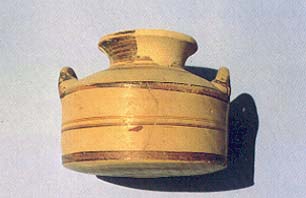
For a while, Aharoni argued that Mycenean III B might well have been used as late as the first half of the 12th century B.C. If that was the case, he continued, the archaeological evidence did not contradict the theory that the city of Hazor had been destroyed in the 12th century, after the initial peaceful infiltration phase in the early days of the Iron Age.
After considerable time, however, Aharoni was forced to face the bitter but unchallengeable fact—as everyone now agrees—that Mycenean IIIB pottery must be basically 13th century and therefore the Canaanite city of Hazor must have been destroyed in the 13th century.
Still adhering to the basic theory of the Alt school of a peaceful Israelite infiltration preceding the expansion phase, and still believing that the Iron Age settlements he had discovered in Upper Galilee were indicative of this earlier phase, Aharoni then decided that these Iron Age settlements dated to the 14th–13th century! His assertion was based on a flimsy and unsound argument concerning the so-called collar-rim jar. The collar-rim jar is a storage jar which has a ridge around the neck, thus giving the appearance of a collar. Albright first alerted the archaeological world to the importance of this storage jar for purposes of Iron Age dating and identification of ethnic groups.
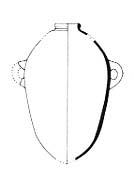
In his effort to date his Israelite settlements in the upper Galilee prior to the destruction of Canaanite Hazor, Aharoni decided that collar-rim jars first made their appearance in the 14th century. This time his evidence comes from Megiddo, excavated by a University of Chicago team in the 1930’s. In their final report, the Chicago excavators published fragments of two collar-rim jars which they ascribe to a Late Bronze Age stratum. However, a careful examination of the locus in which the two fragments were found clearly shows that these fragments were intrusive and in fact belong to a later period. The excavation report states that much of the construction in this locus was “interwoven with” buildings which were clearly from the Iron Age.5 An examination of the plans of this area published in the final report clearly shows the area to be disturbed; sherds found there could theoretically belong to any of five different strata.
In any event it is somewhat amazing that Aharoni would base a whole system of chronology on two isolated sherds. This is wholly contrary to Aharoni’s basic approach (shared by most archaeologists) of not dating strata on the basis of isolated sherds. He himself has written “that sherds are stratigraphically not reliable, even if found in clear stratigraphical context.”6 The dating of a stratum should be determined, he has emphasized, “on the reconstruction of vessels found in situ.”c7
In short, there is no archaeological proof that the Iron Age collar-rim pottery goes back to the 14th or early 13th century. This negative in fact one of the strongest arguments against accepting a theory of coexistence of the Late Bronze Age Canaanite culture and the early Israelite culture in the 14th and early 13th centuries B.C. The complete absence of both cultures together is strong—not “silent”—archaeological evidence fundamentally indicating a sequence of cultures, not contemporaneous ones.
Perhaps I should also mention a very recent—and I may add, desperate—theory advanced by Volkmar Fritz of the University of Mainz to conform our findings at Hazor with Alt’s theory that peaceful Israelite settlements preceded the fall of Canaan’s principal cities to the Israelites. Fritz concedes that Canaanite Hazor fell in the 13th century. But he suggests that its destruction is attributable to the Sea People! This suggestion is unwarranted by any source. Fritz is simply unable to accept the possibility that the Israelites may have conquered Hazor.
Imagine that, instead of the Bible, we possessed an external document describing the Israelites as the Desert Peoples just as the Philistines are referred to in Egyptian documents as one of the Sea Peoples. Perhaps it would then have been easier for scholars to accept the possibility that, just as the Sea Peoples managed to destroy some of the Canaanite cities in western Syria and Palestine, so the Desert Peoples could have destroyed the Canaanite cities to the east.
It should not be surprising that semi-nomadic Israelites were able to conquer fortified cities like Hazor. As all scholars, including Weippert, recognize, there was a marked decline in political and economic stability in Canaan at the end of the Late Bronze Age. The city-states system had, in effect, dissolved. Weippert argues that this state of affairs allowed the peaceful infiltration of the semi-nomadic Israelites. Later, when they had become sedentary, the Israelites founded their twelve-tribe confederacy.
I would make a somewhat different argument. The city-state system had declined not only because of internal problems but also as a result of the hammering and destruction wrought in Palestine by the Egyptian pharaohs during the 14th and 13th centuries. The city-state system had weakened to a degree that enabled even the semi-nomadic Israelites not only to infiltrate into the country but also to capture and give it the coup de grace. We do not have to visualize impregnable, strongly fortified Canaanite bastions, but rather degenerated cities with weak fortifications. Faced with a series of brilliant Israelite military stratagems, these cities fell.
I mentioned earlier that the general historicity of the Biblical account does not exclude the possibility that the account of Israelite conquest of some cities may be etiological or that some details in the conquest narratives may be late inaccurate glosses.
One of the best known cruxes in connection with the Israelite conquest is the apparent conflict between the Biblical account of the conquest of Jericho on the one hand, and the archaeological evidence, on the other. Dame Kathleen Kenyon’s meticulous excavation of the site in the 1950’s uncovered a Middle Bronze Age city fortified by a glacis. At the base of the glacis was a revetment wall and on top of the glacis another wall to give it added height. The city that this wall had enclosed was violently destroyed at the very end of the Middle Bronze Age. Kenyon dates this destruction to about 1,560 B.C.
Evidence of a Late Bronze Age town was also found but Kenyon could not find even a trace of a Late Bronze Age wall. How could the walls of Jericho come tumbling down during the Late Bronze Age if there was no Late Bronze Age wall around the town. There may be an explanation.
In many cases the Late Bronze Age people did not actually build new fortifications but, rather, reused Middle Bronze fortifications, strengthening them where necessary Interpreters often overlook this fact, and it may have an important bearing on the case of Jericho. It may well be that the Late Bronze Age settlement at Jericho reused the city wall from the Middle Bronze Age. If I am correct in this theory, the first Israelite attack on a Canaanite city in the promised land may have occurred in the 14th or 13th century The attack could have been against Jericho, a Late Bronze Age settlement fortified by the still standing Middle Bronze Age city wall.
Ai, the second city on Joshua’s conquest route (Joshua 7–8), presents another problem. The late Judith Marquet-Krause excavated at Ai in the 1930’s and concluded that there was no Late Bronze Age city there. Joseph A. Callaway of the southern Baptist Theological Seminary conducted extensive excavations at Ai in the 1960’s; he too uncovered no remains whatever from the Late Bronze Age. Faced with the conflict between the evidence of Marquet Krause and Callaway, on the one hand, and the Biblical account of Ai’s destruction on the other, Albright suggested that the Biblical description referred not to the conquest of Ai, but to the conquest of nearby Bethel. No destruction of Bethel is referred to in the Bible, but a Late Bronze Age city was destroyed there. Others argued that the Biblical description of Ai was purely etiological, that a late Biblical author had attributed an earlier conquest to the Israelites in order to glorify Israelite history.
Callaway found Albright’s solution to the Ai problem—that the destruction of Ai referred to the destruction of nearby Bethel—unconvincing. Approaching the problem with a more fundamentalistic approach, Callaway was equally unwilling to accept the etiological solution of the Alt school. Callaway suggested a new answer. Because he had discovered two phases of occupation at Ai, each having a slightly different type of collar-rim pottery, Callaway suggested that there were two cities at Ai. The first, he suggests, was a Hivite city. This is the settlement, he says, that the Israelites conquered. Despite the presence of collar-rim pottery associated with this “Hivite” settlement, Callaway says the date of this settlement could be “before some of the last Late Bronze cities fell.”8 Callaway offers the Khirbet Raddana sherd mentioned by Aharoni, as well as another type of jar found at Megiddo as proof for the existence of this type of collar-rim pottery in a Late Bronze context. But the excavators of all the loci in which this type of collar-rim jar was found at Megiddo ascribed these materials, without exception, to the Iron Age. Apparently Callaway recognized that the evidence was being stretched and that the destruction of Ai had occurred at most at the very end of the late Bronze Age, which would place it after the Late Bronze Age destructions of central Canaan.
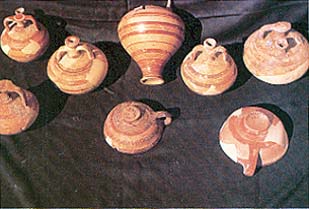
Callaway thus concluded, “I think we can no longer take for granted that the conquest of Canaan by invading Israelites accounts for the Late Bronze Age destructions of Bethel, Lachish, Tell Beit Mirsim, or Hazor.”9 In other words, Callaway concluded that the Israelite conquest had occurred in the Iron Age and that not all the cities captured by the Israelites had been fortified. Some may have been simply villages or hamlets so characteristic of the early phase of the Iron Age. Other places such as Megiddo and Beth-Shean were not conquered at all, says Callaway Biblical tradition says explicitly that they were not captured by the Israelites.
Callaway’s analysis is, in my opinion, untenable. He misdates his so-called “Hivite” settlement; he wrongly rejects the archaeological evidence of Late Bronze Age destruction of major fortified cities at Bethel, Lachish, Tell Beit Mirsim and Hazor and elsewhere; and he ignores the Biblical descriptions of the Israelite capture of large fortified Canaanite cities.
In the case of Ai, therefore, we are left with Albright’s solution or the Alt-school’s etiological solution. My own view is that here the archaeological evidence contradicts the Biblical narrative and we must interpret the Biblical account as etiological.
One final example illustrates a case where I think we must conclude that a late editorial gloss was added to a basically authentic historic text. In the Biblical chronology, the Israelite destruction and burning of Hazor is described in Joshua 11. Later, in the prose description of the Battle of Deborah (Judges 4), we find Deborah and her general Barak fighting against “Jabin king of Hazor.” If Hazor had already been destroyed in Joshua 11, how could Deborah and Barak be fighting against its king in Judges 4? A number of solutions have been proposed. One, mentioned above, proposed by Professor Benjamin Mazar, is to reverse the chronology. He places the battle of Deborah in Judges 4 before the conquest of Hazor in Joshua 11. Recognizing that the archaeological evidence clearly establishes that Hazor was destroyed in the 13th century, Mazar suggests that Deborah lived and fought earlier in the 13th century, rather than in the 12th century, as had previously been supposed. This is possible—at least it tallies with the archaeological evidence from Hazor—but I personally do not believe it. As we have seen, Aharoni’s solution is archaeologically impossible.
Before my excavation at Hazor, Alt himself, who in this case agrees that an historical event lies behind the Biblical narrative, had argued that the mention of “Jabin king of Hazor” in the battle of Deborah required us to place Hazor’s destruction (as described in Joshua 11) at a fairly late date. The Hazor excavations have now rendered this solution untenable.
My own solution, as I indicated above and as Albright already suggested, is that the reference to “Jabin king of Hazor” in Judges 4 is an editorial gloss by a later editor. This suggestion finds support in the fact that the poetic account of this same battle (in Judges 5) makes no mention of Hazor or Jabin.
My basic point in this article is that we should not be dogmatic. We can pick and choose based on the evidence in each case. It is not necessary either to accept each detail of the Biblical account, on the one hand, or to reject the basic historicity of the Conquest, on the other. Examined in this light, archaeology broadly confirms that at the end of the Late Bronze Age, semi-nomadic Israelites destroyed a number of major Canaanite cities; then, gradually and slowly, they built their own sedentary settlements on the ruins, and occupied the remainder of the country.
(For further details, see Yigael Yadin, “The Transition from a Semi-Nomadic to a Sedentary Society in the Twelfth Century B.C.E.,” in Symposia, edited by Frank Moore Gross (American Schools of Oriental Research, 1979).)
MLA Citation
Footnotes
Mycenean pottery is an easily recognized type which originated in mainland Greece and was found all over the Aegean, as well as in Egypt and the eastern Mediterranean coasts. It is subdivided into Mycenean I, II and III. Mycenean I and II are characteristic of 16th and 15th-century B.C. sites.
The Mycenean III type serves as evidence—nearly the only firm testimony available to archaeologists—for absolute dating of strata to the 14th and 13th centuries B.C. A great quantity of Mycenean III pottery was discovered in the short-lived city of el-Amarna in Middle Egypt. Artifacts discovered there are of tremendous importance because they can be absolutely dated to the reign of Amenophis IV (1,364–47 B.C.); the fact that a certain type of Mycenean III pottery, primarily III A, was discovered at el-Amarna makes it a sure peg for absolute chronology throughout the Near East. Another type, Mycenean III B, is associated at Egyptian archaeological sites and other places with the second third of the 13th century B.C., or roughly with the reign of Ramses II.—Ed.
Aharoni also relies on a two-and-a-half letter inscription found on a collar-rim jar at Khirbet Raddana. Aharoni dates the letters—and therefore the jar—to 1,300 B.C. at the latest. Thus, he argues, the collar-rim jar was in use in the Late Bronze Age. Two of the world’s most skilled epigraphists, Frank Moore Cross of Harvard and David Noel Freedman of the University of Michigan date this inscription, on epigraphic grounds, 100 years later, to the Iron Age. Moreover, as Moshe Dothan has pointed out, several iron implements were found with the collar-rim jar at Khirbet Raddana, also indicating a later date.
Similarly, we must reject the argument recently put forward by Aharon Kempinski that a single scarab found on the surface of Tell Masos dates the earliest settlement there to the Late Bronze Age. The dating of the scarab to the reign of Ramses II or Seti II is unconvincing. The whole repertoire of pottery found at the settlement is typical Iron Age and to date has not been found in any context of Late Bronze Age cultures. Moreover, the Pharaoh on the scarab holds a straight sword rather than a sickle-shaped sword, indicating that it probably dates to the Iron Age. In any event, this surface find could well be an heirloom from an earlier period, so it is a thoroughly unreliable basis for dating the Tel Masos settlement.
Endnotes
Manfred Weippert, The Settlement of the Israelite Tribes in Palestine: A Critical Survey of the Recent Scholarly Debate, translated from the German by James D. Martin (London, 1971), p. 5.
